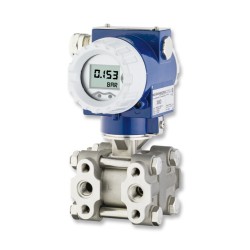 Everything you need to select and source a pressure transmitter can be found from this comprehensive product information page.
Everything you need to select and source a pressure transmitter can be found from this comprehensive product information page.
A complete list of resources to web pages covering pressure transmitter specifications, selection, technical terms, explanations and application notes all in one place.
Pressure transmitters have a 4 to 20 mA current loop output and are used in many industrial and process applications. The robust design of pressure transmitters make them ideal for use in outside installations, often in very harsh environments.
Products
Find product information for current output pressure transmitters for gauge, absolute & differential pressure sensing where a robust 2 wire 4-20mA current output loop is required which can work over long distances without signal degradation.
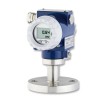 ATEX Approved Pressure Transmitters
ATEX Approved Pressure Transmitters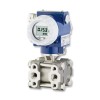 Differential Pressure Transmitters
Differential Pressure Transmitters HART® Pressure Transmitters
HART® Pressure Transmitters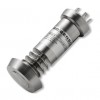 High Temperature Pressure Transmitters
High Temperature Pressure Transmitters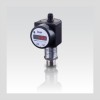 Pressure Indicator Transmitters
Pressure Indicator Transmitters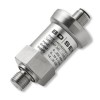 Vacuum Pressure Transmitters
Vacuum Pressure Transmitters Low Differential Pressure Transmitters
Low Differential Pressure Transmitters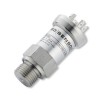 SIL 2 Approved Safety Rated Pressure Transmitters
SIL 2 Approved Safety Rated Pressure Transmitters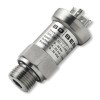 Natural Gas Pressure Transmitters
Natural Gas Pressure Transmitters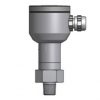 4-20mA Output Pressure Sensors
4-20mA Output Pressure Sensors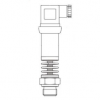 Steam Pressure Transmitters
Steam Pressure Transmitters 0-20mA Output Pressure Transmitters
0-20mA Output Pressure Transmitters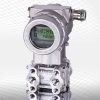 Underground Mining Intrinsically Safe Pressure Transmitters
Underground Mining Intrinsically Safe Pressure Transmitters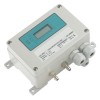 Low Pressure Transmitters
Low Pressure Transmitters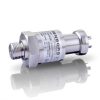 Sea Water Resistant Pressure Transmitters
Sea Water Resistant Pressure Transmitters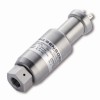 High Pressure Transmitters
High Pressure Transmitters Air Pressure Transmitters
Air Pressure Transmitters Absolute Pressure Transmitters
Absolute Pressure Transmitters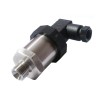 Compound Range Pressure Transmitters
Compound Range Pressure Transmitters Barometric Pressure Transmitters
Barometric Pressure Transmitters IP68 Pressure Transmitters
IP68 Pressure Transmitters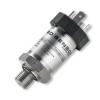 Marine Approved Pressure Transmitters
Marine Approved Pressure Transmitters Intrinsically Safe Pressure Transmitters
Intrinsically Safe Pressure Transmitters Suction Pressure Transmitters
Suction Pressure Transmitters
Description
A pressure transmitter is a pressure sensing device with an output signal that can be sent over long distances without significant signal degradation.
The most common example of a transmitter output is a 4-20mA current loop output, but amplified voltage output signals such as 0-5 or 0-10 volts are also classed as transmitters by some manufacturers, especially where current and voltage options can be specified for the same product type.
The types of current output from a pressure transmitter that you will likely come across are:
- 4-20mA (2 wire)
- 4-20mA (3 wire)
- 0-20mA (3 wire)
A 2 wire configuration means that a total of two electrical wires are used to connect the supply and output connections. The pressure transmitter is connected in series with the components that make up the current loop circuit. There must be a specified minimum voltage supplied between the positive and negative connections to the pressure transmitter to generate a 4-20mA current loop signal. This is the most common configuration used for a 4-20mA output pressure transmitters and is the standard used universally by the process control industry.
3 wire configuration means that a total of three wires are used to connect the supply and output connections. The two output wires are connected in series with other components connected to the current loop output circuit, and the supply positive is connected to the third wire separate to the current loop output circuit. The supply negative is connected to the same wire that the negative side of the current loop is connected.
Installation Tips
Installation tips for improving the measurement accuracy and extending the operational service life of pressure transmitters.
For maximum pressure transmitter life and ease of maintenance the following guidelines are suggested:
- If possible the pressure transmitter should be mounted at ground or walk way level to ease access for installation, maintenance and pressure calibration.
- When the process conditions allow, pressure transmitters should be connected to the measurement point by suitable isolation valves at the process tapping point and also have isolation valves such as a directly mounted three way valve manifold for DP cells terminating the impulse pipe work to the transmitter.
- Avoid mounting pressure transmitters in locations subject to vibration.
- Ensure that the thermal operating limits of the pressure transmitter electronics are not exceeded and for the longest life and highest stability run the pressure transmitter well within its rated temperature limits.
- Use impulse pipe work that is not lagged to provide better thermal transfer with the ambient temperature. This will help to either cool down or heat up the process media in direct contact with the pressure transmitter so that its operating temperature limits are not exceeded.
- Ensure that the wetted parts of the pressure transmitter including ’O’ ring seals and gaskets are chemically and thermally compatible with the process media.
- Any impulse piping between the process and the pressure transmitter should accurately transfer the pressure present at the process taps to the transmitter. Possible sources of error in this transfer are leaks, friction losses (especially in purged systems), trapped gas in a liquid line, or trapped liquid in a gas line causing a head error and temperature induced density variations between impulse line legs causing a head error in differential pressure applications.
The following recommendations are made to minimise pressure transmitter errors:
- Make the impulse piping as short as possible, taking into account the temperature limitations of the pressure transmitter when used with very hot or very cold processes.
- Piping should have a slope of at least 1 in 12 up towards the process connection for liquid and steam service and down towards the process connection for gas service.
- Avoid high points in liquid lines and low points in gas lines.
- On initial commissioning ensure all gas is vented from liquid impulse legs and all liquid is drained from gas impulse piping legs.
- On steam service, fill the impulse lines with water to prevent damage to the pressure transmitter from live steam causing the thermal operating limits of the pressure transmitter to be exceeded.
- For differential pressure applications keep both impulse pipe legs at the same temperature.
- When a sealing fluid is used, ensure that the system is installed such that both piping legs for differential pressure applications may be filled to the same level and will stay at the same level under operational conditions.
- Use impulse piping of sufficient diameter to avoid frictional losses and if purging is used, make the purge connection close to the process taps and for dp measurements purge through equal lengths of the same pipe size. Avoid purging through the pressure transmitter.
Reference documentation for pressure transmitter applications
Useful pages which you can refer to when specifying or using pressure transmitters.
- HART® communications protocol
- Triclamp hygienic fittings sizes
- Check pressure transmitter material compatibility
- British standard pipe (BSP) thread sizes
- Tapered national pipe thread (NPT) sizes
- Convert pressure units
- High temperature stand-off pipe lengths
- Steam pressure and temperature look-up chart
- Steam temperature to pressure converter
- How to calibrate a pressure transmitter
Choose a current output pressure transmitter
Pressure Transmitters with a current signal output for gauge, absolute & differential pressure sensing where a robust current output signal is required for transmitting over long distances with low interference.
If you would like us to select a pressure transmitter for you, then please use this form to specify your requirements.
Absolute Pressure
Absolute reference current output transmitter for measuring pressure with an absolute reference. Absolute referenced pressure transmitters generate a 4mA output signal when the pressure corresponds to a perfect vacuum. An absolute pressure transmitter is used in applications where the pressure of a gas or liquid is isolated from atmospheric pressure changes, for example when testing a sealed pressure vessel for leaks over a long period of time.
for measuring pressure with an absolute reference. Absolute referenced pressure transmitters generate a 4mA output signal when the pressure corresponds to a perfect vacuum. An absolute pressure transmitter is used in applications where the pressure of a gas or liquid is isolated from atmospheric pressure changes, for example when testing a sealed pressure vessel for leaks over a long period of time.
Air Pressure
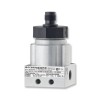 Air pressure transmitter with a 4-20 mA loop output for measuring system air pressures and select appropriate options for monitoring environmental air pressure changes, ventilation duct air pressure, air compressor, air cleaning or pneumatic feed lines.
Air pressure transmitter with a 4-20 mA loop output for measuring system air pressures and select appropriate options for monitoring environmental air pressure changes, ventilation duct air pressure, air compressor, air cleaning or pneumatic feed lines.
ATEX/IECEx Approved
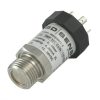 ATEX/IECEx approved intrinsically safe pressure transmitter for use in hazardous zones with flammable gases present such as petrochemical refineries and natural gas distribution pipelines. This pressure transmitter has been approved for use with an intrinsically safe barrier in zones containing flammable gases or dust.
ATEX/IECEx approved intrinsically safe pressure transmitter for use in hazardous zones with flammable gases present such as petrochemical refineries and natural gas distribution pipelines. This pressure transmitter has been approved for use with an intrinsically safe barrier in zones containing flammable gases or dust.
Atmospheric Pressure
 Atmospheric pressure 4 to 20 mA output transmitters with compressed output scalings for better resolution when measuring incremental changes in atmospheric pressure. This baro pressure transmitter can be incorporated into environmental control and monitoring systems, gas analysers and other equipment which require the measurement of ambient air pressure to compensate measurement of another physical parameter.
Atmospheric pressure 4 to 20 mA output transmitters with compressed output scalings for better resolution when measuring incremental changes in atmospheric pressure. This baro pressure transmitter can be incorporated into environmental control and monitoring systems, gas analysers and other equipment which require the measurement of ambient air pressure to compensate measurement of another physical parameter.
Compound Range
Compound range 4 to 20 milliamp output transmitters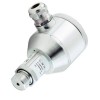 for measuring plus and minus pressures from the same device. Compound range transmitters are calibrated with the most negative reading at 4mA and the most positive reading at 20 mA. Measure vacuum and positive pressure in one current output device.
for measuring plus and minus pressures from the same device. Compound range transmitters are calibrated with the most negative reading at 4mA and the most positive reading at 20 mA. Measure vacuum and positive pressure in one current output device.
Custom Spec
Custom specification 4-20mA pressure transmitter to suit your special application requirements. This customisable pressure transmitters have modular designs which offer a wide choice of product specification options covering electrical and mechanical parameters. This customisable pressure transmitter is designed to be low cost and easily adaptable to meet industrial OEM design requirements.
to suit your special application requirements. This customisable pressure transmitters have modular designs which offer a wide choice of product specification options covering electrical and mechanical parameters. This customisable pressure transmitter is designed to be low cost and easily adaptable to meet industrial OEM design requirements.
Differential
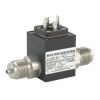 Differential range pressure transmitter for measuring the DP of fluids and gases across particle filters and along a length of pipe to monitor flow. Measure differential pressure of liquids over a wide range of line pressures with a high overpressure rating.
Differential range pressure transmitter for measuring the DP of fluids and gases across particle filters and along a length of pipe to monitor flow. Measure differential pressure of liquids over a wide range of line pressures with a high overpressure rating.
Flameproof
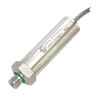 Flameproof approved pressure transmitters for containing internal explosions to prevent ignition of explosive atmospheres. This pressure transmitter has a current output for use in in hazardous areas where flammable or explosive gases may be present in the surrounding environment. This pressure transmitter includes an ATEX Ex d approval certificate.
Flameproof approved pressure transmitters for containing internal explosions to prevent ignition of explosive atmospheres. This pressure transmitter has a current output for use in in hazardous areas where flammable or explosive gases may be present in the surrounding environment. This pressure transmitter includes an ATEX Ex d approval certificate.
Flush Diaphragm
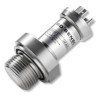 Flush diaphragm pressure transmitter with 4 to 20mA current loop signals with exposed diaphragms for measuring viscous media or substances which require hygienic or sanitary compatibility. This flush mount pressure sensor can be used to measure the pressure in pipes filled with paste like and other slow moving substances.
Flush diaphragm pressure transmitter with 4 to 20mA current loop signals with exposed diaphragms for measuring viscous media or substances which require hygienic or sanitary compatibility. This flush mount pressure sensor can be used to measure the pressure in pipes filled with paste like and other slow moving substances.
HART
 HART communications pressure transmitter for configuration via a pc, laptop, distributed control system or HART communicator. HART functionality enables the transfer of pressure transmitter data via an AC digital signal which uses the 4-20mA analogue output signal as a carrier, thus eliminating the need for extra wires and connectors.
HART communications pressure transmitter for configuration via a pc, laptop, distributed control system or HART communicator. HART functionality enables the transfer of pressure transmitter data via an AC digital signal which uses the 4-20mA analogue output signal as a carrier, thus eliminating the need for extra wires and connectors.
High Accuracy
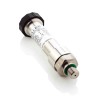 High accuracy & precision digitally compensated 4-20mA transmitter for measuring pressure with a high degree of accuracy. This pressure transmitters combine highly repeatable sensing technology such as semiconductor strain gauge sensing chips with digital signal conditioning electronics to provide a current output signal with the smallest error over the operating pressure and temperature range.
High accuracy & precision digitally compensated 4-20mA transmitter for measuring pressure with a high degree of accuracy. This pressure transmitters combine highly repeatable sensing technology such as semiconductor strain gauge sensing chips with digital signal conditioning electronics to provide a current output signal with the smallest error over the operating pressure and temperature range.
High Pressure
 High pressure milliamp current output transmitter for measuring hydraulic pressures on material testing machines, actuation control systems, pressure rating test equipment, lifts, elevators, cranes and heavy lifting equipment. This high pressure transmitter has an all welded construction and a robust metal sensing diaphragm for withstanding dynamic hydraulic pressures.
High pressure milliamp current output transmitter for measuring hydraulic pressures on material testing machines, actuation control systems, pressure rating test equipment, lifts, elevators, cranes and heavy lifting equipment. This high pressure transmitter has an all welded construction and a robust metal sensing diaphragm for withstanding dynamic hydraulic pressures.
High Temperature
High temperature 4-20mA pressure transmitter tolerant to high temperature applications such as steam power, food and drink processing, plastic moulding and engine monitoring. Ideal for applications where it is not possible to move the pressure transmitter away from the source of high temperature.
tolerant to high temperature applications such as steam power, food and drink processing, plastic moulding and engine monitoring. Ideal for applications where it is not possible to move the pressure transmitter away from the source of high temperature.
Hygienic
Hygienic all welded stainless steel diaphragm transmitter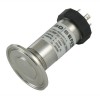 for use in food processing, brewing, distilling, medical products, semiconductor manufacturing processes and other sterile industrial environments. Choose a hygienic 4-20mA loop pressure transmitter with a non-toxic food grade oil filled diaphragm seal for monitoring hydrostatic pressures to determine level and volume of tank contents or the pressure of gases generated by a process. This flush mount pressure sensor can be used to measure pressure in food processing pipework, or the level in tanks used for storage, pasteurization, cooking or distilling.
for use in food processing, brewing, distilling, medical products, semiconductor manufacturing processes and other sterile industrial environments. Choose a hygienic 4-20mA loop pressure transmitter with a non-toxic food grade oil filled diaphragm seal for monitoring hydrostatic pressures to determine level and volume of tank contents or the pressure of gases generated by a process. This flush mount pressure sensor can be used to measure pressure in food processing pipework, or the level in tanks used for storage, pasteurization, cooking or distilling.
Integrated Display
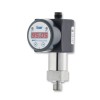 Digital readout current output pressure transmitter with an integrated LED digital display for local reading of pressure. This pressure transmitter gauge provides in-situ readings to monitor process pressures where the current loop signal is transmitted to measurement instrumentation at a different location.
Digital readout current output pressure transmitter with an integrated LED digital display for local reading of pressure. This pressure transmitter gauge provides in-situ readings to monitor process pressures where the current loop signal is transmitted to measurement instrumentation at a different location.
Liquid Level
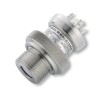 Hydrostatic liquid level pressure transmitter for measuring the hydrostatic pressure exerted by a static head of liquid. Use this pressure transmitter to measure fluid level in storage tanks, processing vessels, header tanks, pump inlet head and other applications where hydrostatic pressure is used to determine liquid height.
Hydrostatic liquid level pressure transmitter for measuring the hydrostatic pressure exerted by a static head of liquid. Use this pressure transmitter to measure fluid level in storage tanks, processing vessels, header tanks, pump inlet head and other applications where hydrostatic pressure is used to determine liquid height.
Low Pressure
 Low range differential pressure transmitter with 4 to 20 mA current loop output for the measurement of very low range pressures. This low range pressure transmitter can be used to measure pressure between rooms to maintain clean room environments or measure ventilation pressures either side of a fan or particle filter.
Low range differential pressure transmitter with 4 to 20 mA current loop output for the measurement of very low range pressures. This low range pressure transmitter can be used to measure pressure between rooms to maintain clean room environments or measure ventilation pressures either side of a fan or particle filter.
Marine Certified
Marine approved pressure transmitter that is approved for marine use on ships and other offshore applications. Use this marine certified pressure transmitter to measure engine room pressures on air, steam, seawater, hydraulic and engine control systems.
that is approved for marine use on ships and other offshore applications. Use this marine certified pressure transmitter to measure engine room pressures on air, steam, seawater, hydraulic and engine control systems.
Rangeable
 Rangeable pressure transmitter which can be down-ranged by the operator to scale the 4 to 20mA output signal to a different pressure range. Use this adjustable range pressure transmitter to cover many applications on a process plant without the need to stock lots of different ranges.
Rangeable pressure transmitter which can be down-ranged by the operator to scale the 4 to 20mA output signal to a different pressure range. Use this adjustable range pressure transmitter to cover many applications on a process plant without the need to stock lots of different ranges.
Submersible
 Submersible 4-20mA current loop output transmitter for immersing underwater to measure hydrostatic liquid level, water depth or pressure of submerged equipment. These pressure transmitters are designed to be permanently installed underwater to a specified depth and are IP68 rated. Available with atmosphere vent for self-compensating for barometric changes, or non-vented for on submersibles where there is no connection to the surface.
Submersible 4-20mA current loop output transmitter for immersing underwater to measure hydrostatic liquid level, water depth or pressure of submerged equipment. These pressure transmitters are designed to be permanently installed underwater to a specified depth and are IP68 rated. Available with atmosphere vent for self-compensating for barometric changes, or non-vented for on submersibles where there is no connection to the surface.
Vacuum
Vacuum and negative gauge pressure transmitter for measurements over the low vacuum range with an absolute or negative gauge reference. Measure partial vacuums used for manufacturing processes, food packaging, autoclave sterilization, leak testing, process purging and atmospheric simulation.
for measurements over the low vacuum range with an absolute or negative gauge reference. Measure partial vacuums used for manufacturing processes, food packaging, autoclave sterilization, leak testing, process purging and atmospheric simulation.
Product Help
Dry air compatible 4 to 20mA pressure transmitter
We are looking for a 4-20mA transmitter for measuring the pressure of dry air, can you recommend a product which would be suitable?
We would suggest the DMP331 which is a 4-20mA pressure transmitter suitable for ranges from 0 to 1000mbar and above or the DMP343 which is a transmitter specifically for low range pressures which will cover ranges form 0 to 10 mbar upto 0 to 1000mbar.
Customs commodity coding
What is the customs tariff code for a pressure transmitter?
In the UK a pressure transmitter falls within the UK trade tariff commodity coding for section XVIII chapter 90 which includes:
Optical, photographic, cinematographic, measuring, checking, precision, medical or surgical instruments and apparatus; parts and accessories thereof.
The applicable heading for pressure transmitters is 9026 which includes:
Instruments and apparatus for measuring or checking the flow, level, pressure or other variables of liquids or gases (for example, flow meters, level gauges, manometers, heat meters), excluding instruments and apparatus of heading 9014, 9015, 9028 or 9032.
There is also an additional sub-heading code of 20 which includes:
For measuring or checking pressure.
This is followed by a further sub-heading of 20 which includes:
Electronic.
And finally 90 which includes:
Other
The final customs tariff code to use is 9026202090 for importing into the UK, and 90262020 if exporting from the UK.
Measure suction pressure
How do you use a dp transmitter to measure suction pressure?
Since differential pressure transmitters measure pressure between two points of high and low pressure, the suction pressure is simply the pressure difference measured on the low port compared to the high port. A standard differential pressure transmitter setup to measure a positive delta pressure and output 4-20mA can be easily converted to measure suction over the equivalent range in the reverse direction by swapping over the process connections to the high and low ports.
The DMD341 low range pressure transmitter has a selection of ranges from 6 to 1000 millibar which can be used to measure suction pressure.
Pressure switch vs transmitter
What is the difference between a pressure transmitter and a pressure switch?
Pressure transmitters provide a continuous amplified analogue output signal of typically 4-20mA which varies proportionally with changes in pressure.
Pressure switches have open/close voltage free switch contacts or an on/off fixed level signal which is triggered at a pre-configured pressure setpoint.
Operating Intrinsically safe pressure transmitter without an IS barrier
If you are installing an intrinsically safe pressure transmitter, can you wire it up without the intrinsically safe barrier and still get a correct 4-20mA value out of the transmitter?
Yes, if an IS pressure transmitter is installed in a safe area without an IS barrier, it will function in the same way as a non-IS approved pressure transmitter.
Span limit
What is the span limit of a pressure transmitter?
 The span limit typically refers to the highest and lowest possible span configuration for a rangeable pressure transmitter.
The span limit typically refers to the highest and lowest possible span configuration for a rangeable pressure transmitter.
A rangeable pressure transmitters will have a nominal pressure range and an adjustable output signal. The adjustment is normally limited to a ratio of the nominal pressure range.
For example a rangeable pressure transmitter with a range of 20 bar and span turn-down ratio of 10:1, would have an upper span limit of 0 to 20 bar and a lower span limit of 0 to 2 bar.
Pneumatic vs Electronic pressure transmitters
What is the difference between electronic pressure transmitter and pneumatic pressure transmitter?
Electronic pressure transmitters are designed to measure pressure and typically output a 4 to 20 milliamp current loop signal.
Pneumatic pressure transmitters are designed to measure pressure and typically output a 3 to 15 psi pressure signal which is generated by regulating an incoming air supply pressure of at least 15 psi. Pneumatic pressure transmitters are also called pneumatic, pressure-to-pressure, P-to-P or P2P transmitters.
Measuring suction with gauge pressure transmitter
How are gauge referenced pressure transmitters configured to measure suction pressure?
All types of suction pressure transmitters with a gauge reference will measure the amount of suction below atmospheric pressure. Typically the 4mA output is set to zero suction pressure (ambient air pressure) and 20mA output is set to max suction pressure. It is also possible to reverse the output on some devices to set 4mA to the maximum required suction pressure, if preferred.
What is a compound range pressure transmitter
We have a system specification which includes a pressure transmitter that has a compound pressure range, please could you explain what is meant by compound?
A compound pressure ranges is one that has an output signal which combines a negative with a positive pressure range.
e.g. If you wanted to measure an air suction pressure of 0 to -200 mbar g and an positive air pressure of 0 to 400 mbar g with a 4 to 20 mA, the appropriate compound pressure range would provide a measurement signal as follows: -200mbarg = 4mA, 0mbarg = 8mA and +600mbarg = 20mA.
Using ATEX pressure transmitter with an IS barrier
Does an ATEX approved intrinsically safe pressure transmitter need to be used with an IS barrier?
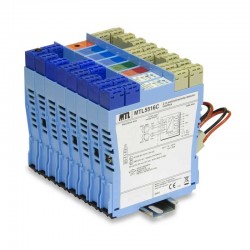 If you are going to use the sensor in a hazardous area you will also need to install a suitable IS barrier which is compatible with the required entity parameters for current, power consumption etc…, we would suggest the MTL 5500 Isolator or the MTL7700 Zener IS Barrier series for compatibility with most ATEX approved pressure transmitter types.
If you are going to use the sensor in a hazardous area you will also need to install a suitable IS barrier which is compatible with the required entity parameters for current, power consumption etc…, we would suggest the MTL 5500 Isolator or the MTL7700 Zener IS Barrier series for compatibility with most ATEX approved pressure transmitter types.
An ATEX approved intrinsic safety pressure transmitter does not need to be used with a IS barrier if installed in a safe (non-hazardous) area and should operate as normal without the barrier.
Related Help Guides
- How to get a 10 volt signal from a 4-20mA output pressure sensor
- Transforming a 2 wire Current Loop into a Voltage Output Signal
- How do you measure flow rate with a dp cell
- How to Connect a 4-20mA Current Loop Pressure Transmitter
- What is difference between working, burst and over pressure
- Supply voltage and load resistance considerations for pressure transmitters
- What can cause random variation in pressure transducer output
- What is the difference between a pressure transducer and a transmitter
- Does the type of Engineering Units matter for Pressure Transmitters
- Choosing calibrator for pressure transmitters
- How to create a list of specification parameters for a pressure sensor

